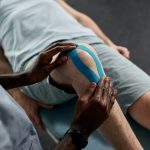In our quest for optimal health, the role of dietary fiber often takes center stage. We all know that fiber is essential for regular bowel movements, but its impact extends far beyond this basic function. For instance, a high-fiber diet can play a significant role in managing and preventing conditions such as diverticular disease, including diverticulosis and diverticulitis.
In this article, we’ll delve into the complexities of this disease and explore how a fiber-rich diet can influence its symptoms. We’ll also look at the latest studies and scholarly research available on Google Scholar to provide accurate and up-to-date information. So, let’s begin by understanding what diverticular disease is all about.
Additional reading : What is the Role of Occupational Therapy in Managing Post-Stroke Recovery?
What Is Diverticular Disease?
Diverticular disease refers to two conditions, diverticulosis and diverticulitis, which affect our bowel health. These conditions involve the formation and inflammation of diverticula, small pouches that can develop in the lining of the digestive system.
Diverticulosis indicates the presence of these pouches without any symptoms, while diverticulitis refers to a painful condition that arises when these pouches become inflamed or infected. Although they may sound intimidating, it’s important to remember that diverticulitis is manageable, and certain dietary choices can significantly reduce the risk of flare-ups.
Additional reading : What Breathing Techniques Can Aid in Reducing Hyperventilation Episodes?
The Role of Fiber
What role does fiber, or dietary fibre as it’s known in some regions, play in diverticular disease? Numerous studies maintain that a diet high in fiber can drastically reduce the risks associated with this disease.
Fiber works in several ways to promote bowel health. For one, it adds bulk to the stool, which can prevent constipation and straining during bowel movements, the main factors that contribute to the formation of diverticula. A high-fiber diet also helps to soften the stool, allowing it to pass more easily and reducing the pressure on the diverticula.
On top of this, fiber can help to reduce inflammation in the bowel, decreasing the risk of diverticulitis flare-ups. However, to fully appreciate how a high-fiber diet can impact the symptoms of this disease, we need to delve into the available scientific literature.
Scholarly Evidence on the Impact of High-Fiber Diets on Diverticular Disease
Many studies on Google Scholar suggest that a high intake of fiber can influence the risk of developing diverticular disease. For example, a 2011 study published in the British Medical Journal found that dietary fibre intake was inversely associated with diverticular disease risk. That is, the more fiber the participants consumed, the lower their risk of developing the disease.
Another study in the American Journal of Clinical Nutrition found that eating a diet rich in fiber could reduce the risk of diverticulitis by as much as 40%. This reduction was particularly noticeable in those who got their fiber from fruits and vegetables, rather than from cereals.
While these studies provide strong support for the role of fiber in diverticular disease, it’s important to note that more research is needed to understand the exact mechanisms and the optimal amount and types of fiber to consume for disease prevention and symptom management.
Recommended Fiber-Rich Foods for Diverticular Health
So, what should you eat if you want a fiber-rich diet that will reduce your risk or alleviate your symptoms of diverticular disease? The answer lies in a variety of foods that are readily available and can be easily incorporated into your daily meals.
Fruits and vegetables are excellent sources of fiber, and as we’ve seen, they can be particularly effective in reducing the risk of diverticular disease. These include berries, peas, broccoli, and leafy green vegetables, which are not only high in fiber but also packed with essential nutrients for overall health.
Whole grains are another vital source of fiber. Swap refined grains like white rice and regular pasta for whole grains such as brown rice, whole-grain pasta, and whole wheat bread.
Legumes, including beans, lentils, and chickpeas, are not only high in fiber but also rich in protein, making them a great choice for vegetarians and vegans. And let’s not forget nuts and seeds, which can be enjoyed as a snack or added to dishes for an extra fiber boost.
Remember, the key here is to incorporate these fiber-rich foods into your diet gradually to allow your body to adjust. Drinking plenty of water is also crucial, as it allows the fiber to do its job more effectively.
In conclusion, a fiber-rich diet can play a significant role in managing and preventing diverticular disease. While more research is needed to determine the optimal intake and types of fiber, current evidence suggests that incorporating a variety of fiber-rich foods into your diet can help to reduce the risk of disease and alleviate symptoms. Remember, before making any drastic changes to your diet, it’s always best to consult with a healthcare professional.
High-Fiber Diet Recommendations for Diverticular Disease
If you’re looking to manage or prevent diverticular disease through your diet, there are several high-fiber foods that can be beneficial. Now, we’ll explore these food groups in detail.
Firstly, fruits and vegetables are excellent sources of dietary fiber. Some of the best options include berries, peas, broccoli, leafy green vegetables, and apples, which are all readily available and can be incorporated into your daily meals. Google Scholar offers numerous articles pointing to the effectiveness of these foods in reducing the risk of diverticular disease.
Whole grains are another excellent source of fiber. Opt for whole grain versions of bread, pasta, and rice, as opposed to refined versions. Research from PubMed shows that a diet high in whole grains can lower the risk of diverticulitis.
If you’re a fan of legumes, these too are high in fiber. Beans, lentils, and chickpeas are not only beneficial for bowel health but also rich in protein. Additionally, nuts and seeds, despite their small size, are fiber powerhouses that can be enjoyed as a snack or added to meals for a fiber boost.
Avoiding low fiber and red meat intake is another dietary modification that can help to manage symptoms and prevent flare-ups. It’s important to note that these changes should be made gradually. A sudden increase in fiber intake can cause bloating and gas, so it’s best to gradually incorporate these foods to allow your body to adjust. Moreover, drinking plenty of water is crucial as it helps the fiber to work more effectively.
Conclusion: The Impact of a High-Fiber Diet on Diverticular Disease
Our journey through the complex maze of diverticular disease and the impact of a high-fiber diet on its symptoms has been enlightening. Available studies from Google Scholar and free articles from PubMed all point to the same conclusion – incorporating more fiber into the diet can significantly reduce the risk of developing diverticular disease and manage its symptoms.
Individuals with this condition can benefit from a diet rich in fruits and vegetables, whole grains, legumes, nuts, and seeds. However, it’s crucial to remember that any dietary changes should be made gradually and with the guidance of a healthcare professional.
While the research on this topic is still ongoing, the findings suggest that lifestyle factors, including dietary fiber intake and physical activity, play a crucial role in managing this disease. As further research emerges, we hope to gain more insights into how a high-fiber diet can impact diverticular disease. Until then, it’s clear that making healthful, fiber-rich dietary choices can help to keep our digestive systems in optimal health.











